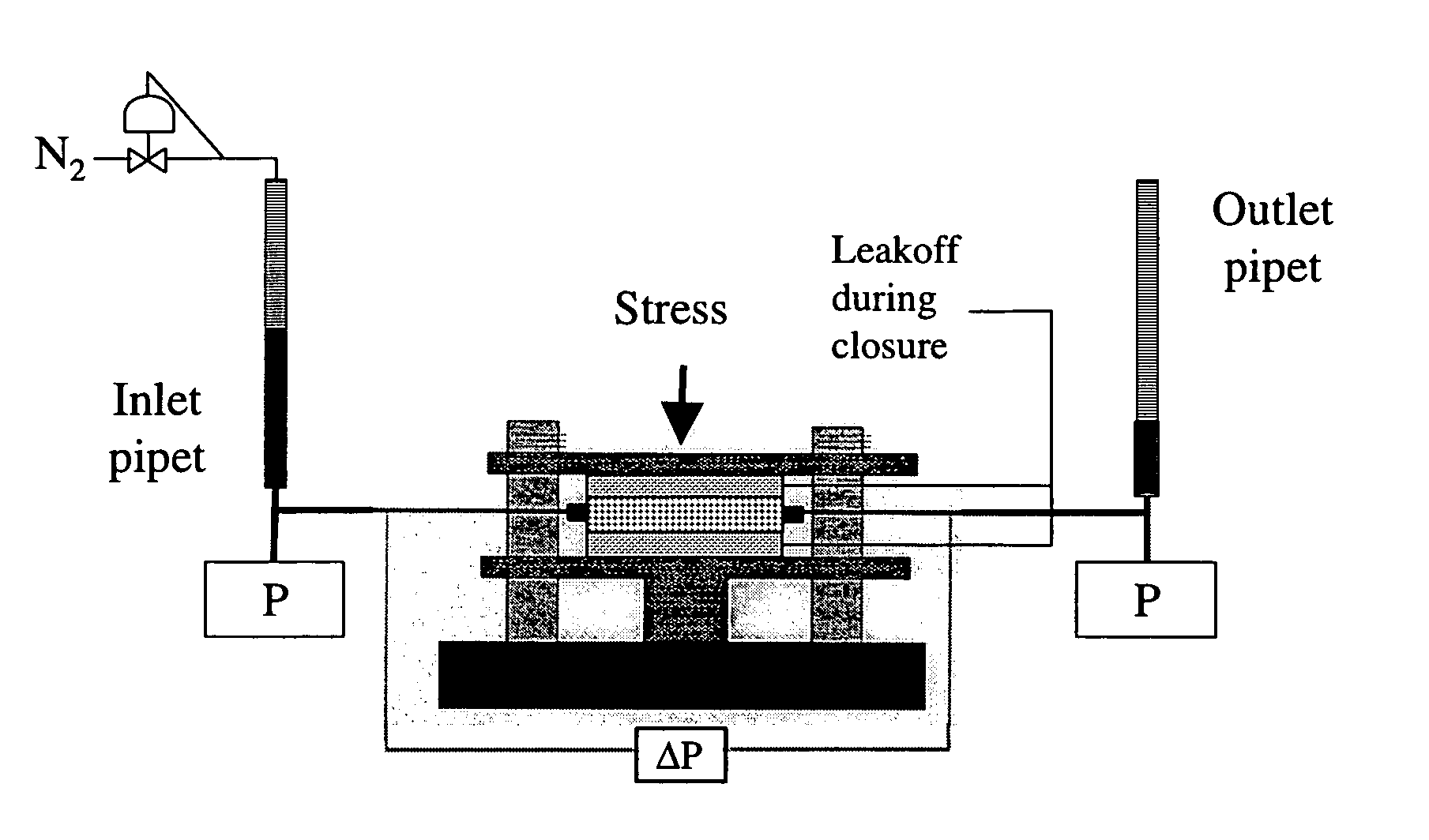Fluid loss additive for enhanced fracture clean-up
a technology of hydraulic fracturing and additives, applied in the field of recovery of oil and gas from wells, can solve the problems of delayed breaking of fracturing fluids, underperforming fractures, and less effective breaking of zirconium and titanium crosslinked gels, and achieves low flow initiation gradient and reduced molecular weight of concentrated polymers.
- Summary
- Abstract
- Description
- Claims
- Application Information
AI Technical Summary
Benefits of technology
Problems solved by technology
Method used
Image
Examples
examples
[0046]Multiple runs were conducted using flow initiation gradient (FIG) measurement equipment to investigate the effect of the chemical breaker ammonium persulfate on borate crosslinked guar. The equipment consisted of a modified standard API conductivity cell in which a fracturing fluid and proppant were placed between two slabs of reservoir rock as shown schematically in FIG. 1. The rock was Ohio sandstone with a permeability near 0.1 mD. On the external side of the rock there were two pistons that allowed a closure stress to be applied to the rock and the proppant pack. The pistons had an internal fluid path so that any fluid that leaked off into the slabs from the pack was recovered outside of the cell. This process served to concentrate the fracturing fluid, as only brine will pass through the tight rock matrix. Typically, the leak off process continued until the pistons moved to a point where the proppant supported the closure stress. The final average concentration factor of ...
PUM
 Login to View More
Login to View More Abstract
Description
Claims
Application Information
 Login to View More
Login to View More - R&D
- Intellectual Property
- Life Sciences
- Materials
- Tech Scout
- Unparalleled Data Quality
- Higher Quality Content
- 60% Fewer Hallucinations
Browse by: Latest US Patents, China's latest patents, Technical Efficacy Thesaurus, Application Domain, Technology Topic, Popular Technical Reports.
© 2025 PatSnap. All rights reserved.Legal|Privacy policy|Modern Slavery Act Transparency Statement|Sitemap|About US| Contact US: help@patsnap.com



